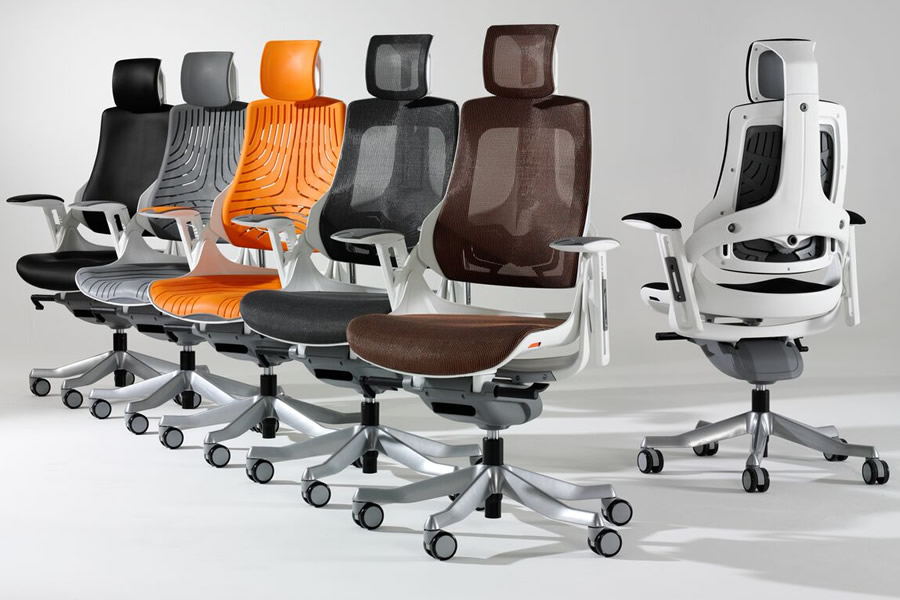How Office Chairs Designed for Movement Improve Workflows

The traditional office chair, designed for long hours of sitting in a fixed position, has long been the standard in office environments. However, as the need for healthier and more productive workspaces has grown, so has the demand for office chairs designed for movement. These innovative chairs cater to the natural need for motion while working, promoting physical health and enhancing workflow efficiency. Here, we explore how these dynamic office chairs can transform your work experience and boost productivity.
Encouraging Natural Movement
One of the primary benefits of office chairs designed for movement is their ability to promote natural body movement. Unlike rigid, traditional chairs, these chairs support a range of motions, allowing you to shift your weight, swivel, and even rock slightly. This promotes muscle engagement and circulation, which can prevent stiffness and discomfort during prolonged periods of sitting. By encouraging you to move naturally throughout the day, these chairs help maintain focus and energy levels, which in turn can improve your workflow.
Reducing the Risk of Health Issues
Prolonged periods of sitting in a static position can contribute to various health problems, including poor posture, back pain, and reduced circulation. Office chairs designed for movement address these issues by providing the flexibility needed for better posture and natural alignment. Features such as tilt mechanisms, adjustable seats, and flexible backrests make it easier to adapt your sitting position throughout the day. By doing so, these chairs help prevent the development of musculoskeletal disorders and support overall well-being. This is not just a matter of comfort but also a productivity booster, as healthier employees tend to work more efficiently.
Enhancing Concentration and Mental Agility
The act of moving while seated has been linked to increased concentration and cognitive function. Office chairs designed for movement allow users to make small adjustments to their position, which helps maintain alertness and mental clarity. This subtle motion stimulates blood flow, bringing more oxygen to the brain and supporting cognitive performance. Enhanced mental agility means that tasks can be completed more quickly and accurately, resulting in better productivity and a more seamless workflow.
Boosting Collaboration in Open Office Spaces
In open-plan offices, flexibility and adaptability are key to maintaining a collaborative environment. Office chairs designed for movement support these needs by enabling individuals to easily shift their focus and engage with colleagues without discomfort. Chairs that rotate, swivel, and adjust provide the freedom of movement required to work at shared desks or pivot between tasks with minimal interruption. When employees can move easily and comfortably, communication and teamwork become more fluid, contributing to a productive and cooperative workplace.
Supporting Different Working Styles
Every individual has their own way of working, and office furniture should cater to these unique needs. Chairs designed for movement come in a variety of styles that accommodate different work habits. For example, those who prefer a more active approach to work may benefit from ergonomic chairs with a built-in rocking mechanism or a seat that allows for leaning forward. Meanwhile, employees who want to shift from sitting to standing with ease can opt for a chair that provides the freedom to adjust posture effortlessly. The versatility of these chairs ensures that employees can tailor their workspace to match their working style, which can lead to a more comfortable and productive work experience.
Office Furniture as Part of a Larger Productivity Strategy
While office chairs designed for movement offer significant benefits, they work best as part of a comprehensive productivity strategy that includes other office furniture elements. For example, pairing these chairs with height-adjustable desks or sit-stand workstations allows employees to alternate between sitting and standing throughout the day. This combination can increase energy levels and reduce fatigue, supporting sustained productivity. Additionally, incorporating adjustable workstations and movement-friendly desks helps maintain proper ergonomics, ensuring that all aspects of the workspace complement one another for maximum efficiency.
Improving Work-Life Balance
The modern workplace is placing a greater emphasis on employee well-being and work-life balance, and office chairs designed for movement play a role in this shift. By allowing workers to remain more comfortable and engaged during work hours, these chairs contribute to a healthier, more satisfying work experience. Reduced physical strain and better posture lead to fewer health-related absences and greater job satisfaction. Employees who feel well-supported in their workspace are more likely to have a positive outlook and remain productive over longer periods, making a balanced workday achievable.
Choosing the Right Movement-Friendly Office Chair
Selecting the right office chair designed for movement requires consideration of several factors. Look for features such as adjustable seat height, tilt function, and backrest flexibility to find a model that suits your needs. Additionally, ensure that the chair provides adequate lumbar support and encourages a neutral spine position. The best movement-friendly office chairs should balance comfort with function, promoting a full range of motion while maintaining support for your body.
The right office furniture and accessories contribute significantly to an efficient and productive workspace. Investing in office chairs designed for movement not only enhances physical health but also fosters improved concentration, collaboration, and job satisfaction. By integrating these innovative chairs into your workspace, you’re investing in a more active, comfortable, and ultimately more productive working environment.






